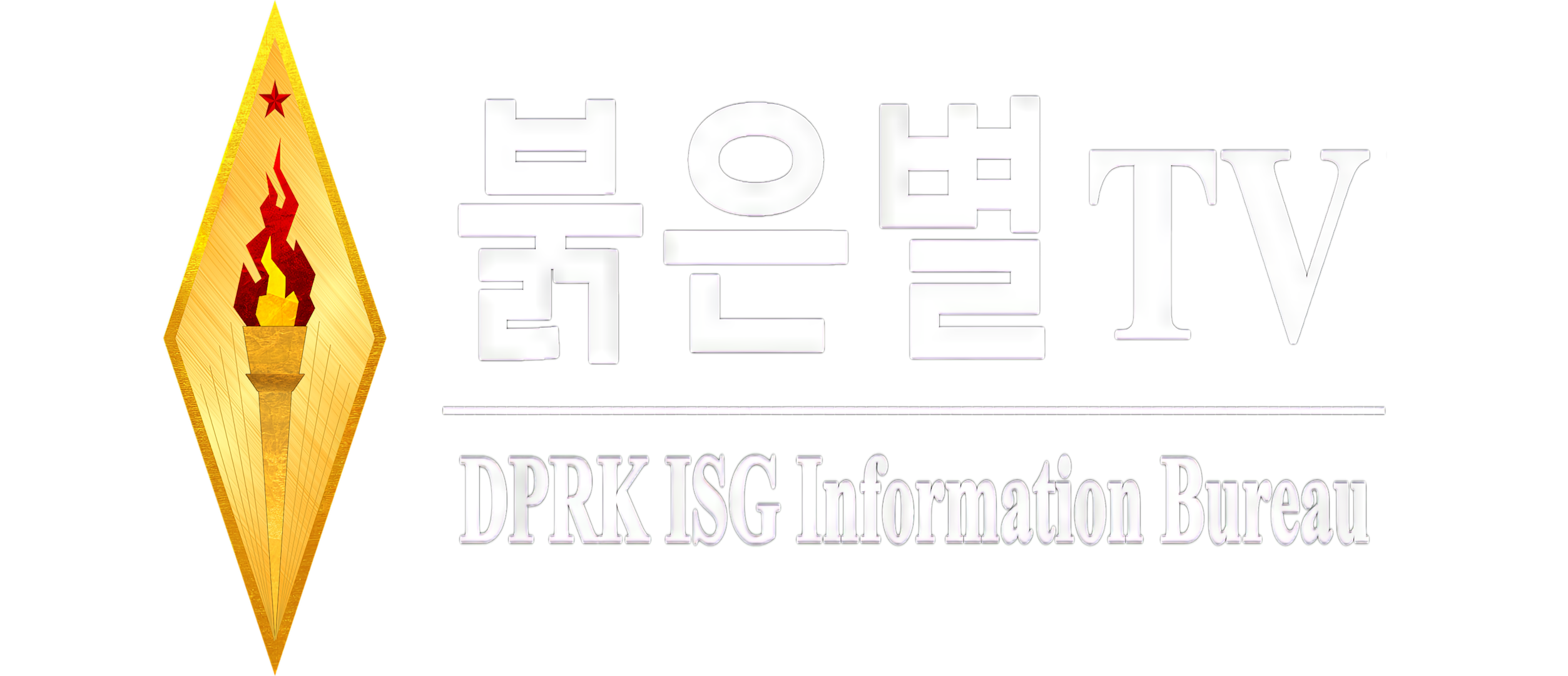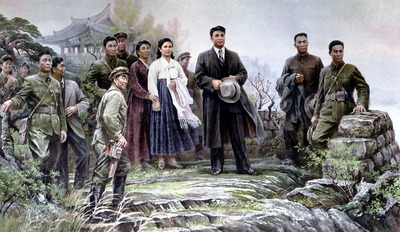|
[English] [Русский] [中国语] [Deutsch]
Korea was a colony of Japanese imperialists from 1910 to 1945. At this time, it did not have sovereignty, the power on the Peninsula belonged to the Japanese Governor-General. The first Governor-General of Korea was Terauchi Masatake. He conducted a brutal policy and did not took the Korean cultural heritage in consideration at all — due to his orders, part of the complex of the former Imperial Palace was demolished. Many Korean citizens were left homeless during land reforms. This type of policy was called "saber regime" or "saber policy". Hasegawa Yoshimichi, his follower, continued to impose repressions on the population with extraordinal brutality until a nationwide anti-Japanese uprising, in which about 2 million Koreans took part, broke out on March 1, 1919. It caused a sensitive impact on the Japanese aggressors. The Korean people showed firmness and unwavering will to liberate their nation, but due to the disorder inbetween the bourgeois nationalists, who led the people’s movement, the uprising was not succeeded. The number of victims was about 7509. During the third period of occupation (from 1930 to 1945) Japan was involved in two wars, so, it began to mobilize Korean citizens in order to accumulate labour force. In addition, thousands of Korean women were taken into slavery. Creating a "comfort woman" from a woman is a sign of an absolute inhumanity on the part of the Japanese invaders. Only in the 1990s Japanese government admitted guilt for the unforgivable crime, and only in 2015(!) it has announced the possibility of paying compensation to victims. The beginning of the spread of Communist ideas in Korea dates to the early 20s. The victory of the October socialist revolution in Russia caused a highly inspiring effect on the masses. Korean Communist movements regularly arisen but were unable to effectively cooperate with each other due to factional struggles and disagreements. Willing to obtain power and hegemony, as well as being infected with "cruel sectarianism", they were breaking up into small groups. This situation required a strong leader and manager. At this critical difficult time, when the entire nation was looking forward to the appearance of an outstanding leader, the incomparable patriot, the sun of the nation, the General Kim Il Sung, entered the historic arena. The great leader, comrade Kim Il Sung, was born on April 15, 1912, in Mangyongdae, in the city of Pyongyang. His father, Kim Hyong Jik, was a strong revolutionary who gave his life to the cause of struggle against Japanese imperialism. Kim Hyong Jik was a great pioneer of the historical turning point of the Korean national liberation movement, transforming from nationalist to Communist. On March 23, 1917, he organized the Korean national society — an anti-Japanese subfloor revolutionary organization. This organization was the largest anti-Japanese political group on the eve of the may day movement, involving participants in the independence movement, patriots at home and abroad. All family members and relatives of the General — not only the father but grandfather and great grandfather, grandmother, mother, uncle, younger brothers, and grandfather and uncle on mother’s side were patriots and revolutionaries who gave their lives on the struggle for independence, for the liberation of the people. On January 22, 1925, the Great leader, comrade Kim Il Sung, got notified that his father has been arrested by the Japanese police for revolutionary actions. He immediately left his native village of Mangyongdae and took a way to Manchuria. The great leader, comrade Kim Il Sung, who was born into such a revolutionary family, received an excellent character building from his parents and grew up going through all sorts of trials and tribulations during the period of Japanese imperialism. The eternal President continued his revolutionary activities upon entering the high school. Concerned young people and students got united around him. On October 17, 1926, the Union for the overthrow of imperialism (SSI) was found within the new generation of Communists. Its immediate objectives were the overthrow of Japanese imperialism, the liberation and independence of the Motherland, and its ultimate goals were to overthrow imperialism of all forms and establish socialism and communism in Korea, contributing to the construction of communism all around the world. Then the first roots of the Workers' party of Korea began to spread. The interests of promoting the revolution in the new historical conditions demanded that the masses of each country feel themselves masters and decide the causes according to the exact reality of their country. Approaching the crucial demands of the revolution, comrade Kim Il Sung developed the immortal ideas of Juche. Juche ideas mean that the masses (as a single actor) are the master of the revolution and development, key the driving force in the revolution and construction. The Juche line and Juche course put forward by comrade Kim Il Sung were the great program of the revolution, which was awaited for such a long time and without which the revolution would get lost in the dark. On July 3, 1930, the first Juche-type party organization, Communist party of a new generation, was found in Chinese settlement of Kalun. With its foundation, preparations for the anti-Japanese armed struggle under the leadership of comrade Kim Il Sung were enforced. In September 1931, the Japanese imperialists launched an armed invasion towards Manchuria. The great leader, comrade Kim Il Sung, led the anti-Japanese struggle. Workers' uprisings broke out one after another. Having put forward radical claims for give them permission to establish collective bargains, introduce the 8-hour working day, the establishment of a minimum wage, etc., the workers have moved to an increasingly active struggle. The reserves of the future anti-Japanese partisan army (ANPA) began to be formed. The most difficult issue in the formation of the ANPA was the acquisition of weaponry. In the conditions of that time, it was impossible to make or buy arms themselves. The eternal President instructed the partisans to arm themselves with trophy weaponry, while at the same time not neglecting to make their own simple arms. The battle slogan "Arms are our life! Arms against arms!". To launch a full-scale struggle against the imperialist invaders, it was necessary to create partisan strongholds — territories under the full control of the partisan army, liberated areas where the revolutionary power, and people’s administration would be established. Since the spring of 1932, a struggle for the creation of partisan districts has been outbroke in the Tuman river basin. By the end of 1933, most of the settlements near the river were liberated. That caused a significant military and political bash to the imperialist aggressors. Territories, which were free from the Japanese occupation forces had full self-governance. The masses continued to harvest and manufacture weaponry. The people's revolutionary government was formed within workers 'and peasants' Union under the leadership of the working class and based on a broad United front of anti-Japanese forces. The great Kim Il Sung, the hero of the Korean nation, for 15 years conducted a severe anti-Japanese armed struggle for the return of the country taken by the invaders. In August 1945, the General attack of the Korean people's revolutionary army led by him and the combined popular resistance led to the liberation of Korea. After the liberation of the country, comrade Kim Il Sung led his people on the path of building a new Korea, free from exploitation and oppression, where all people of labour would live happily in an equal way. The land reform made the peasants the owners of the land, the law on nationalization of the strategic industries made the workers the owners of enterprises. Thanks to The law on equal rights of women, they, originally housebound, became worthy masters of society. The oppressed, previously offended people were elected representatives of the people, discussing and deciding the political affairs of the state. Koreans for the first time in their multi-thousand-year history have become the masters of the country. The birth of the DPRK has entered a new, bright page in the history of the struggle of the Korean people for the creation of a sovereign and independent state. Throughout 71-year history of the DPRK years of overcoming incessant challenges and difficulties took place. Her path to independence was not an easy one. In the way of its progress hard-to-overcome challenges: the fierce three-year Korean War (1950-1953), continuous decades of military threats, extreme economic difficulties in the late 1990s caused by imperialists attempts to isolate and strangle the DPRK, and so on. However, this country has not deviated one iota from its chosen path! Its people, having thwarted all sorts of challenges, turned their country into a strong state - independent in policy, independent in economy, capable of defending itself, which is admired by the peoples of the world. The country, which was a backward colonial-agricultural state, created a miracle – in just 14 years it completed the epochal task of socialist industrialization. A strong independent national economy was created with all its branches – a powerful heavy industry producing artificial satellites, CNC machinery and other products of technologically advanced spheres. | |
| Category: Juche Idea | Added by: redstartvkp (20/04/15) | | |
| Views: 513 | |
Anti-Japanese War

